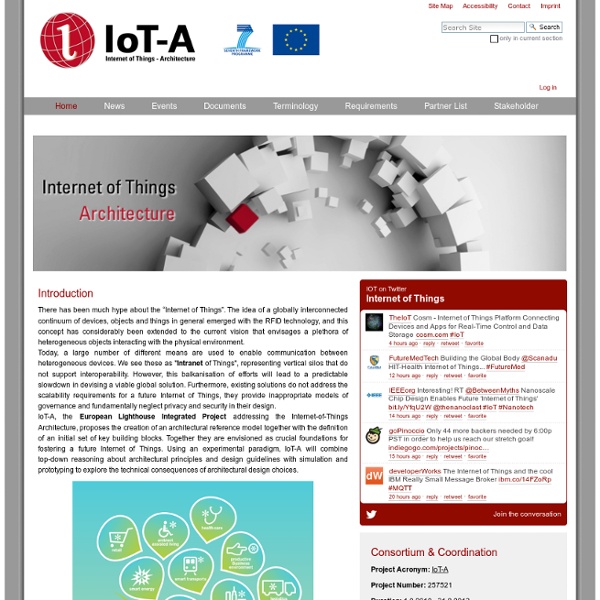Internet of Things - Architecture — IOT-A: Internet of Things Architecture
The Architectural Reference Model (ARM), presented in this book by the members of the IoT-A project team makes it possible to connect vertically closed systems, architectures and application areas so as to create open interoperable systems and integrated environments and platforms. It constitutes a foundation from which software companies can capitalize on the benefits of developing consumer-oriented platforms including hardware, software and services. The material is structured in two parts. Part A introduces the general concepts developed for and applied in the ARM. It is aimed at end users who want to use IoT technologies, managers interested in understanding the opportunities generated by these novel technologies, and system architects who are interested in an overview of the underlying basic models.
Tracking the Internet of Things: Postscapes
I-O-T : INTERNET Of THINGS / Internet des Objets
Related:
Related:




Look at the requirements if you want to understand the challenges without doing a new brainstoming by dregep Mar 5
Look at the documentation page at SOTA document as an antry point (far from being complete but good to start on). by dregep Mar 5